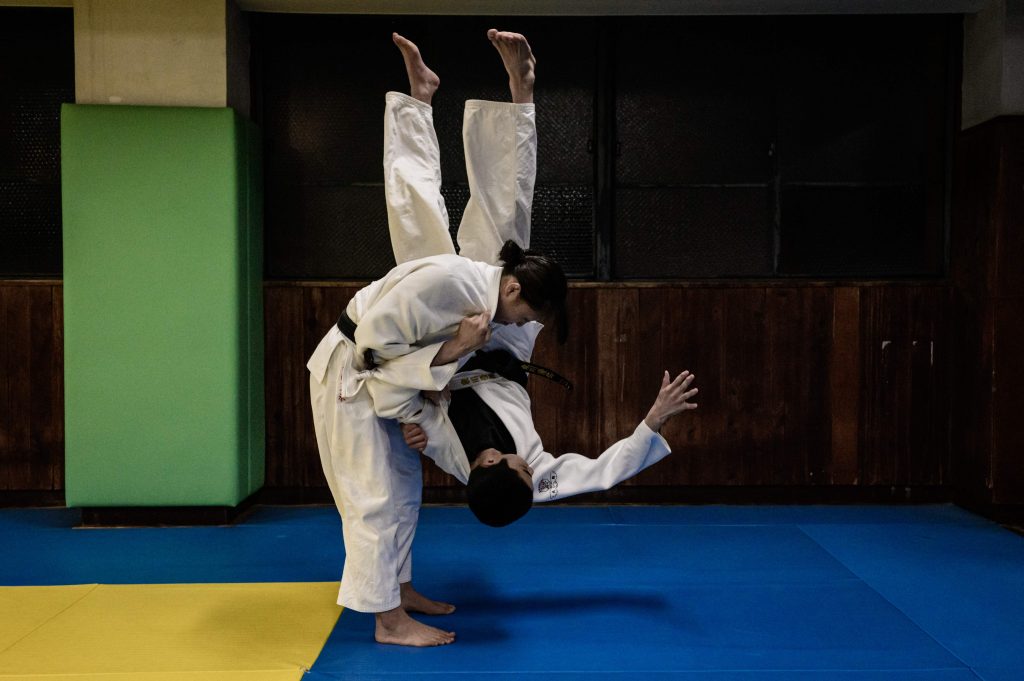
- ARAB NEWS
- 01 Jul 2025

TOKYO: Judo is known for its killer throws and lightning-fast grappling moves but the sport has a lesser-known application popular in Japan: the ancient healing art of “judo therapy.”
Over its decades-long history, judo has branched into two areas. The “sappo” or “kill method” developed into the Olympic sport and the “kappo” or “resuscitation method” grew into the art of “judo therapy.”
Judokas use their knowledge of how joints, limbs and muscles move to defeat opponents but in “kappo”, therapists attempt to speed up the body’s natural healing mechanism to treat injuries that do not require surgery or hospital treatment.
“Simply put, we are specialists in things such as broken bones, dislocations, bruises and sprains,” said Hiroyuki Mitsuhashi, an executive at the Japan Judo Therapist Association.
“Rather than performing surgery like in orthopaedics, we use our hands to heal,” he told AFP.
More than 73,000 licensed judo therapists work at more than 50,000 clinics across Japan. All of them are required to have some judo experience before becoming certified clinicians.
They are especially popular with student athletes and those suffering from the nagging pains of old injuries that conventional doctors would consider already healed.
Travel agent Yoshie Takahashi, 59, broke her right wrist in early January. She went to hospital but later X-rays showed her treatment had failed to align the fracture properly.
She ditched her specialist in favour of Mitsuhashi, who used judo therapy techniques to manipulate the joints and realign the bones correctly.
“I am much more comfortable here. I am feeling less pain,” Takahashi said after a visit to Mitsuhashi’s clinic where she received various treatments including dipping her wrist in a tub of warm water with ultrasound waves, a treatment said to accelerate healing.
“I think (judo therapists are) more patient-focused. They are well-educated and explain things fully until you understand,” she said.
As well as treating injuries, judo therapists are also finding a niche in keeping Japan’s ageing population fit and healthy in the country’s super-aged society, where more than 28 percent of people are 65 and older.
Many judo therapists offer regular classes of low-impact exercise inspired by the martial art that are keeping pensioners sprightly and more resistant to falls.
During one such evening class earlier this year, judo therapist Taisuke Kasuya put five elderly pupils through their paces in a small room with straw tatami mats at a Tokyo community centre.
For some three decades, Kasuya has taught modified versions of a low-intensity exercise with slow movements, using a breathing technique similar to the Chinese practice of Tai Chi.
But the original exercise was devised by none other than Jigoro Kano, the revered father of modern judo.
“Use your body efficiently. That promotes your metabolism and stabilises your mental state,” said Kasuya, a judo black-belt reciting Kano’s teachings.
“Unlike other exercise, we use the philosophy of working on both your body and your mind,” he said.
The judo-based exercise has eased chronic pains for septuagenarian Yasue Ikezumi, a retired pharmacist who has taken Kasuya’s exercise class for 15 years.
“I feel this is different from other exercises. I feel my joints are becoming flexible,” she said.
“I was in such pain in my 60s. But I am now almost 80 and I am able to keep up my fitness. It’s like I am able to restore my body,” she said.
Judo-based exercises can help improve the sense of balance and prevent falls for many elderly people, said Koichi Haramaki, a martial artist who teaches judo in the western Wakayama region.
He gives a weekly class to local senior citizens on how to fall at his “dojo” or martial arts training centre.
“The ultimate purpose of it is not for the elderly to master the moves. But by rolling on mats and practising moves, they use their semicircular canals (part of the inner ear that governs balance) and stimulate their cerebellum,” he told AFP.
“If you practice how to fall, in the end, you stop falling. Your balance improves.”
AFP